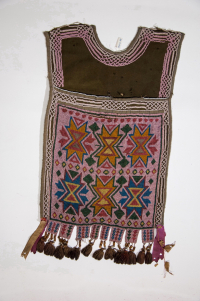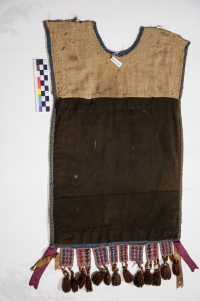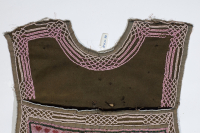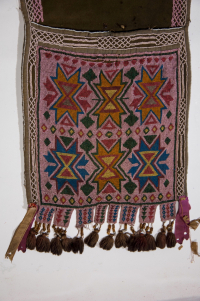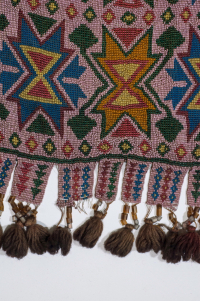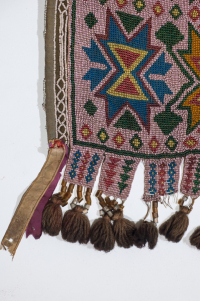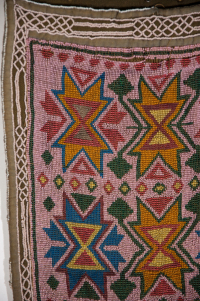Bandolier Bag
Bandolier Bag
Bandolier Bag
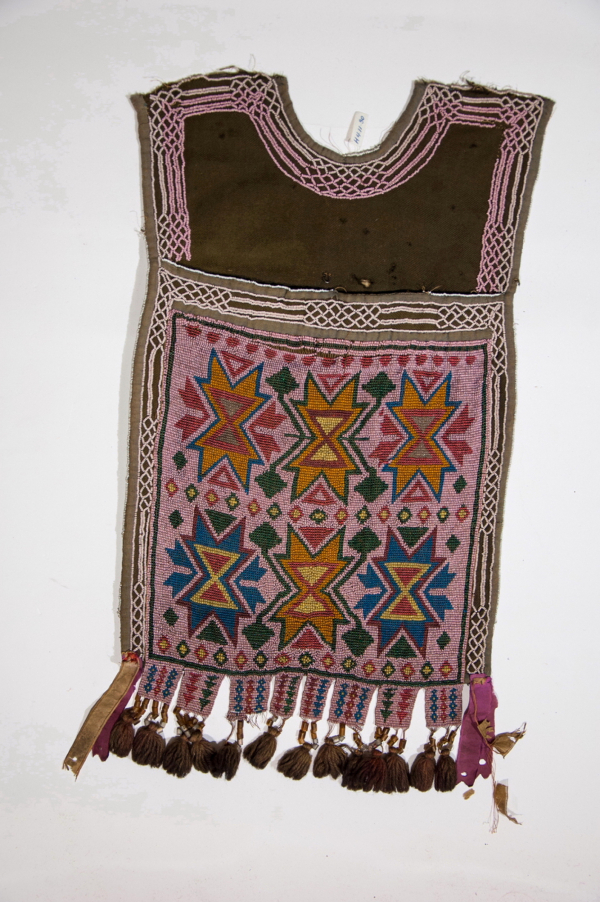

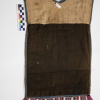
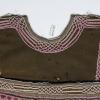
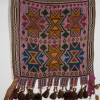
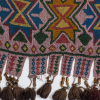
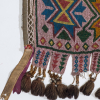
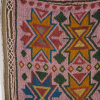
Loom-woven & overlay-stitched beadwork, missing straps, functional pocket, bias tape edging, 8 silk ribbon & tube bead tabs & yarn tassels
Summary of available descriptive information
Read More About This Relative
Fabric, cotton, green (army) & white, Bias tape, cotton, green (army), Ribbon, silk, pink (magenta) & white (cream), Yarn, pink fading into brown, Beads, tubular, brown (light transparent) & white (opaque), Beads, seed, clear, red (opaque bright pink, opaque medium pink, opaque rose), orange (opaque marigold), yellow (opaque greasy lemon), green (transparent dark green), blue (opaque medium).
Hand sewn, Pocket backed with brown cotton. Lined with white cotton, Inside top of pocket reinforced with stiff paper, Loom-woven beadwork, Overlay-stitched beadwork, Eight woven beaded tabs at bottom with yarn tassels, Tabs at bottom corners of cream and purple silk ribbon.
Ottertail, dot, diamond, hourglass, triangle, feather?, claw?.
"Bandolier bags most likely originated in the Upper Great Lakes region during the 1840s and 1850s. Fashioned exclusively from European materials and adorned with thousands of beads, bandolier bags were primarily for show, as a symbol of identity, wealth and status. Although initially functional, by the late 19th and early 20th centuries many of the bags had false pockets or none at all. Sometimes called "friendship bags", they were often created as gifts to strengthen relationships within communities or between nations. By the 1870s they had become an important element of formal dress worn mainly at ceremonies and celebrations by men, and occasionally by women. They wore them - singly or several at a time - crossed over the torso or draped around the neck. The wearing of more than one bag was generally the prerogative of a leader or a person of high honour." (McCord, 2013)
Provenance
McCord Museum. Wearing Our Identity. Montreal: The McCord Museum, 2013. Print.
McCord Museum. Wearing Our Identity. Montreal: The McCord Museum, 2013. Print.
About This GRASAC Record
Manitoba Museum
Content from the Manitoba Museum's catalog records. Uploaded by Orvis Starkweather as part of their summer internship.













 Knowledge Sharing Platform
Knowledge Sharing Platform

